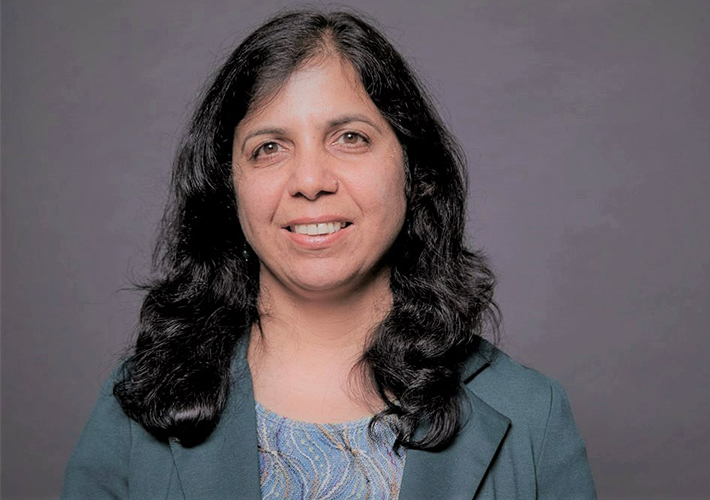Connected Medical Devices Contribute to Improved Quality of LifeHarnessing the Power of Data to Improve Healthcare
Implantable devices increasingly rely on the internet of things, and Abbott engineers advance the hardware and software that help physicians help their patients.
Oct. 01, 2021
- Copy Link
- Share on X
- Share on Facebook
- Share on Linkedin
Any team needs multiple skill sets to accomplish a goal.
It's no different when Abbott's teams are innovating around integrating the internet of things – or IoT technology – into health care.
Our scientists and engineers are expanding on long-standing implantable devices like pacemakers, to create sophisticated medical devices, for everything from cardiac care to neuromodulation to address chronic pain or movement disorders.
"We are quickly adapting to give health care professionals the tools to collect, analyze and transmit health data remotely," says Nidhi Narang, director of software engineering at Abbott. "That provides them with more data and deeper insights into patient care."

Nidhi Narang, Director of Software Engineering for Medical Devices
Fast-moving iot
The internet of things (IoT) is a broad term that describes items, like sensors, devices, or appliances, that have an internet connection allowing for remote operation or monitoring. That's how a homeowner can turn on their kitchen lights or close the garage door when they're away from home.
Narang says this STEM-intensive field has accelerated in the past five to seven years, making remote monitoring of implanted medical devices the standard of care that clinicians and their patients prefer.
"Smartphones have made it so much easier to connect remotely," she says. "A clinician could be away from their office and still get an alert about a patient and view it directly on their phone's screen to decide what, if any, action is needed."
This kind of monitoring also is evolving to include artificial intelligence and machine learning, Narang says.
Diverse disciplines
Connected medical devices involve much more than the hardware implanted into a person. There also are layers of software and security involved in the monitoring components.
Work on connected devices involves many STEM disciplines. Narang says members of her team have backgrounds in software, electrical, mechanical and systems engineering, along with biomedical knowledge.
"You also need to know how various systems connect together," Narang says. "There's a lot of software knowledge required, and software itself is a very broad term — there's embedded software, mobile software and web software."
Connected technology, especially with medical devices, is still an emerging field with plenty of opportunity.
"We find new team members often have experience in a particular area, but not the overall IoT ecosystem, and that's because it's still evolving," Narang says. "To make a good engineer, you need to understand your space well and how your space fits into the entire ecosystem. There are many layers to what we do, and we train our talent."
In addition to keeping a heartbeat in rhythm or monitoring glucose levels without a fingerstick, devices can help doctors and their patients gain a more holistic and detailed look at overall health.
Implanted devices track and sends data to your smartphone, "kind of like a virtual assistant you have with you all of the time," Narang says. "We can use new technologies to truly integrate various aspects of a person's life and lifestyle."
Prioritizing security
Creating or upgrading a connected device requires consideration of possible cybersecurity issues. The stakes are high with an implanted medical device, and there are many regulatory aspects that affect hardware and software.
"In addition to internal testing and threat modeling, we conduct risk assessments and risk management at every turn," Narang says.
"We have multiple layers of protection, from right in the implanted device to how data are stored to how it is communicated. We keep every link of the ecosystem in mind when we consider security. Our quality system is built as if it were intended for our families, and we ask, 'Would I be comfortable using this?'"
Regardless of the connected device type, it's always a team effort to develop the right solution for different health conditions. Engineers at Abbott work across many disciplines to bring cutting-edge medical devices to those who need them most.
"So many different skill sets come together in building an IoT system, Narang says. "And our reward is to hear how our products make an immediate impact on people's lives and help them thrive."